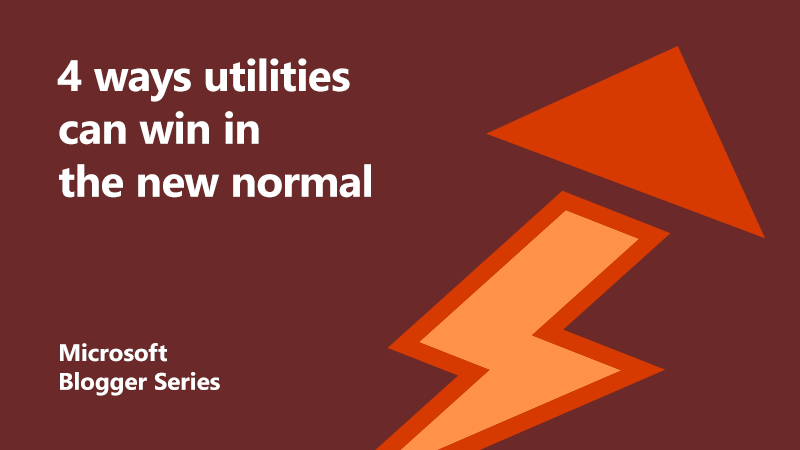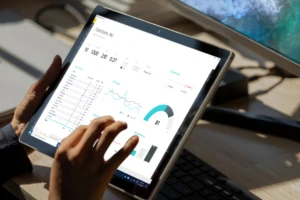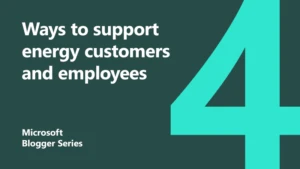
4 ways data and analytics can help the utilities sector in the new normal
 In the third part of our back to work blog series for the UK utilities sector, we talk to our partner SparkBeyond. They highlight a number of ways data and analytics can provide tangible and practical business outcomes as we transition towards the ‘new normal’.
In the third part of our back to work blog series for the UK utilities sector, we talk to our partner SparkBeyond. They highlight a number of ways data and analytics can provide tangible and practical business outcomes as we transition towards the ‘new normal’.
Rising unemployment, changing income levels, remote work, and other elements of a COVID-19 world are impacting consumer spending and forging new customer behaviours. To ensure that utility companies emerge from this crisis on top, new data and new approaches must be implemented.
Our partner SparkBeyond highlights a number of ways data and analytics can provide tangible and practical business outcomes as we transition towards the ‘new normal’.
For deeper insight on these use cases, visit the webinar recording where we and the SparkBeyond team discuss in more detail.
Data and analytics are driving impact in a big way
Traditionally, data models are manually created by internal data science teams and embedded in solutions bought by a business. While relied upon for decades, they have become rigid and lack real time applications. By leveraging AI, utilities can benefit from more flexible models that automate pattern recognition as new data appears. These adaptive models are the key to identifying trends in real time as the economy evolves and pricing changes. This will help businesses meet consumer demand.
There’s a real opportunity to innovate now and shape what that ‘new normal’ will look like and not wait for it to happen. Using data as an asset, taking advantage of best practice partnerships is really the key to accelerate that journey.
Here are four ways that data science and AI can help utility organisations drive impact and achieve successful outcomes:
1. Combine resources
Conventional work processes have undergone a fundamental shift. Remote work, once considered a perk of office culture, has become the norm. Therefore, the ability to access and utilise resources from wherever you or your employees are is a must.
Utilities can combine productivity applications, cloud technology services, and security systems together. Teams in multiple locations can cross-train one another, collaborate on inter-departmental projects, and work together harmoniously.
Transform the way you work from wherever your people are.
2. Forecast changes with AI
 The ability to discover where delays may occur in the supply chain or the particular elements that are likely to drive up costs is simply invaluable.
The ability to discover where delays may occur in the supply chain or the particular elements that are likely to drive up costs is simply invaluable.
Your internal teams such as engineering and asset and customer care and marketing, can leverage data science platforms. They can discover a range of explainable insights, identify at-risk areas of business and prevent problems before they happen. They can also forecast demand by identifying hidden patterns buried deep in data, understanding key drivers of new customer behaviours.
For example, one utility company sought to predict levels of water pollution build-up to ensure operations continued uninterrupted. They were unable to leverage external data sets such as geo-spatial data (SHAPE files). This was because of the technical difficulties involved with integration and alignment. This meant the company was not able to consider external factors which were impacting the company’s operations, such as restaurants and farms in the immediate vicinity of water pumping stations. Previous consultancies had armed them with just one actionable insight after three months.
Using external data sets such as census, weather reports, demographical data, OpenStreetMap, and others with Azure Data and AI stack, SparkBeyond discovered hundreds of new drivers of water pollution. This included the effects of the weather, all the way through to uncovering geo-spatial insights such as the impact of farms and restaurants. To help the company mitigate additional risk, these insights were used to create a unique risk scoring method for each pumping station. Glassbox explainability meant that everyone, from engineers through to the CEO, could interpret the insights and the model’s predictions as well as take confidence to their accuracy.
3. Personalise the customer experience
Take the economic impact of COVID-19 for example. This has caused lower incomes and higher unemployment rates. Making the likelihood of payment defaults driven by unaffordability higher than ever.
What if we could uncover new drivers of at-risk utility customers?
Using a combination of historical payment information, demographical data, marketing reports, and customer interactions, utilities can detect early trend signals and predict which customers are more likely to default. This creates new opportunities to prioritise certain services to the most at-risk customers. You can help them avoid payment default while optimising customer retention efforts.
4. Reduce customer churn
The most effective way to lower churn is to understand why customers leave. Data scientists and existing solutions can predict which customers will churn, but not why. In turn customer service and marketing teams can struggle to implement effective customer retention efforts.
Did you know that the day a customer is called can impact the likelihood of churning? Or that low team performance can be attributed to sales reps’ outdated call scripts?
AI can spot weaknesses in the supply chain, leading to the discovery of unique, explainable insights that were previously unexplored. Rapidly searching connections in both internal and external datasets and automatically combining features can uncover micro segments and create new ones.
For the utilities sector, these connections explain why – and when – customers churn. Feature discovery helps business leaders create new ways of customer engagement such as virtual assists and remote digital services.
To lower customer churn and create effective engagement, utility companies must accelerate digital transformation programmes. They can engage customers in new ways and help engage them for a powerful and positive impact.
Using data and analytics to find the unknowns
 Data science teams and solutions only find the insights the human data scientist thinks to test and code for manually. This means companies will only find the insights they expect.
Data science teams and solutions only find the insights the human data scientist thinks to test and code for manually. This means companies will only find the insights they expect.
But with AI you can discover deeper insights quicker, as there are no long manual processes. With SparkBeyond on Azure, for example, you can combine internal data with a rich source of external datasets, such as geospatial, weather, economic, and demographic data. But it’s about more than in-depth analytics. It’s about asking the right questions to solve problems unique to the Utility sector.
The SparkBeyond platform eliminates the need for internal data science teams to manually search for patterns and correlations. Human limitation causes analysts to find connections only where they think to look. But SparkBeyond on Azure removes the limitations of human intelligence, time and bias. It can – even without large data sets – search for small, subtle patterns that generate maximum impact. The platform leverages all possible data sources. This removes the need for complex data to find the unknowns and the unexplored, revealing key drivers of change.
Utilities can emerge from this crisis on top by implementing AI-powered, data science-backed solutions now.
The power of data analytics and AI can be realised today – it is not just a thing for the future.
“Just as the widespread adoption of computerised spreadsheets in the 1990s unlocked new ways to understand and manipulate data, so too does the current explosion in new data tools and analytical techniques promise to elevate utilities’ understanding about their operations and customers. The first important step in unlocking that value is for utility executives to realise the current potential of analytics and experiment with the tools they already have.”
Embracing data and analytics
Quick wins are required to prove the value of data and analytics. However, utilities are already seeing the operational and financial benefits today. The overall journey to a consistent business-focussed data platform may take some time, but the millions of pounds in value will not be possible without embracing advanced analytics and AI.
Keep an eye out for the next exciting addition to the back to work series, when we hear practical customer examples of how technology has enabled and transformed the workforce experience.
Find out more
Create intelligent apps with Azure AI
About the authors
 Rik is responsible for establishing and driving Microsoft’s strategy and position in manufacturing, energy, and resources in the UK.
Rik is responsible for establishing and driving Microsoft’s strategy and position in manufacturing, energy, and resources in the UK.
Prior to joining Microsoft, Rik worked at Cisco for 13 years, with global roles in digital transformation, IoT/IIoT, and security in energy and process industries, specialising in new and emerging technology adoption. He created a number of global solutions, validated designs, training and collateral for industrial environments, with a focus on the OT/operational domain.
Rik has worked in various standards bodies/consortia including Open Process Automation, IEC61850, IEC62351, and been UK Cigre SCD2 Lead.
He has written for industry publications and journals, authored multiple technical and business white papers, and is a published author with a book on advanced security for IoT/IIoT.
Rik holds a Bachelor’s Degree, and an MBA focused on international leadership.

George has over 10 years’ experience helping companies in the energy sector navigate rapid change. Formerly Asia Pacific Commercial Director at Bloomberg New Energy Finance, George looks after SparkBeyond’s energy, utilities, and power customer practice, and helps them supercharge their AI ambitions. George has also written several blogs on the subject of energy and AI.
SparkBeyond is a Top 15 global data and AI Microsoft partner used across many Global Fortune 2000 names. SparkBeyond is also McKinsey’s global AI platform.




